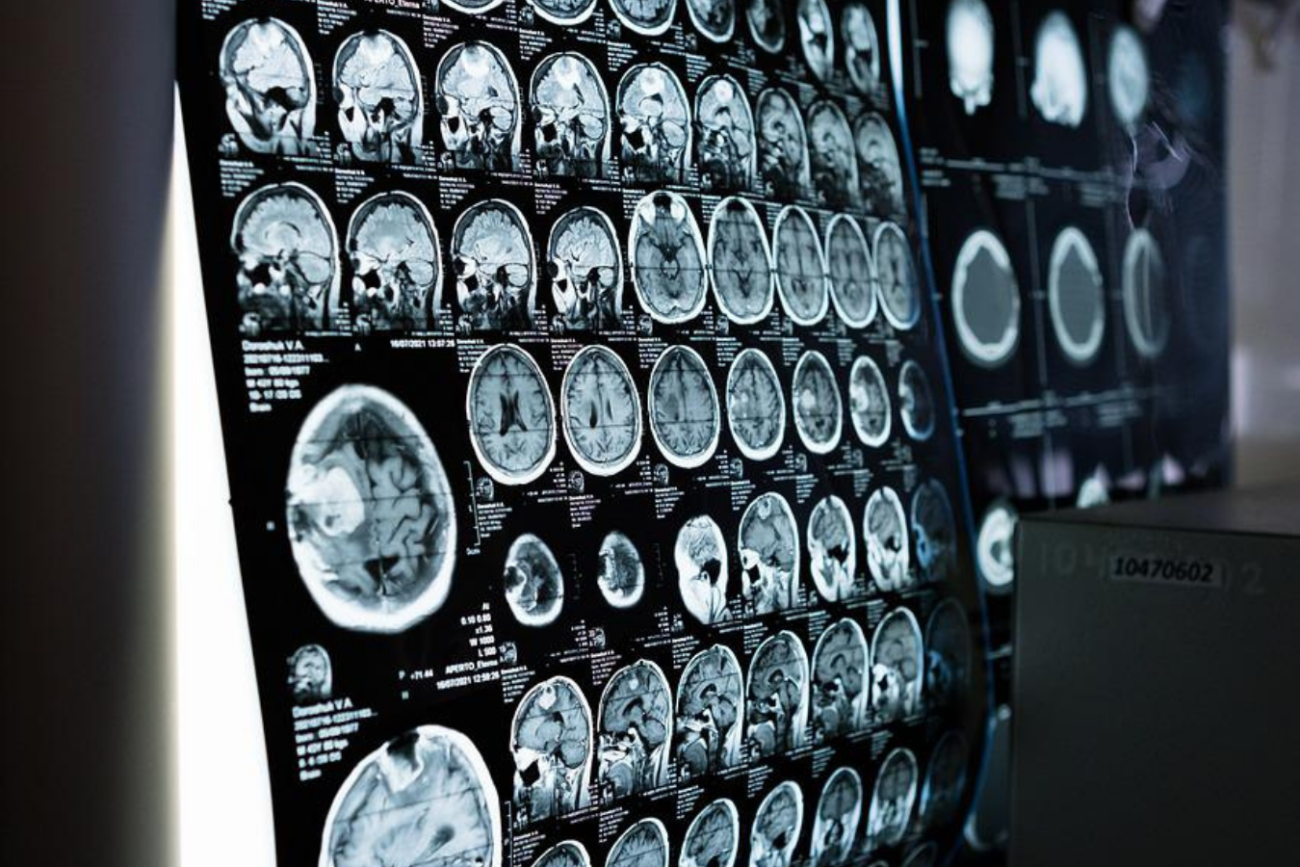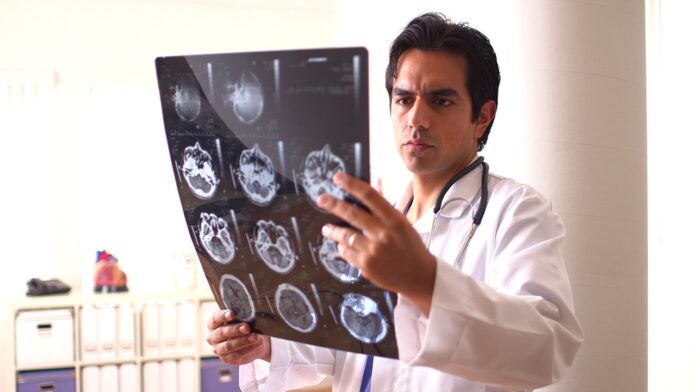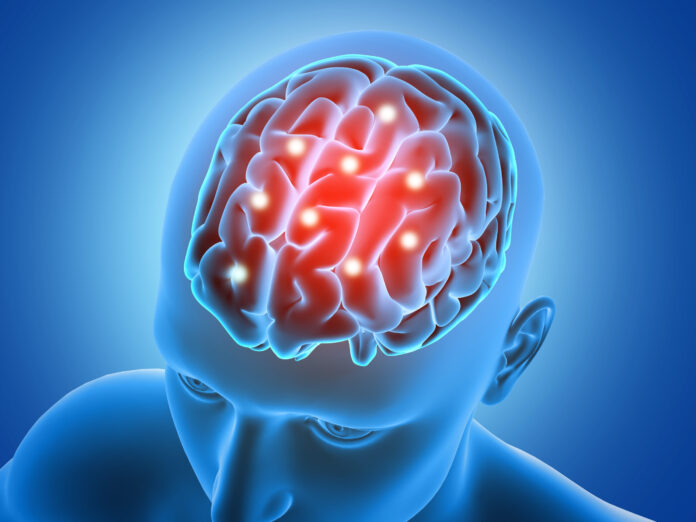- Meningioma is a slow-growing and usually benign brain tumor that originates in the meninges
- Meningiomas can develop from abnormal cells in the protective coverings of the central nervous system
- Meningiomas are more commonly diagnosed in adults, particularly women
- Genetic mutations and hormonal factors may play a role in the development of meningiomas
- Warning signs of meningioma include persistent headaches, seizures, changes in vision or hearing abilities, and memory problems
- The symptoms of meningioma vary depending on the location of the tumor within the brain or spinal cord
- Diagnostic tools for meningioma include imaging tests and genetic testing
- Treatment options for meningioma may include watchful waiting, radiation therapy, and surgery
- Surgery is often the primary treatment option for meningiomas, aiming to remove the tumor completely while preserving neurological function
- Lifestyle changes, emotional support, and joining online communities can help individuals manage the challenges of living with meningioma
Understanding Meningioma: The Basics
Meningioma is a type of brain tumor that originates in the meninges, which are the thin membranes that surround the brain and spinal cord. These tumors are typically slow-growing and usually benign, meaning they do not spread to other parts of the body. However, their location and size can cause various symptoms and complications.
What is Meningioma and How Does it Develop?

Meningiomas develop from abnormal cells in the meninges, which are the protective coverings of the central nervous system. The exact cause of their development is still unknown, but research suggests that genetic mutations, hormonal factors, and radiation exposure may play a role. These tumors can grow on any part of the brain or spinal cord, with the most common locations being near the skull or along the spinal cord.
Who is at Risk and How Common is Meningioma?
Meningiomas can affect people of all ages, but they are more commonly diagnosed in adults, particularly women. Estrogen receptors present in meningioma cells may contribute to the higher incidence in females. It is estimated that meningiomas account for approximately 30% of all primary brain tumors, making them one of the most common types of brain tumors.
The Role of Genetics in Meningioma Development
Genetics may play a role in the development of meningiomas, as certain genetic conditions and syndromes have been linked to an increased risk. For example, individuals with neurofibromatosis type 2 (NF2) have a higher likelihood of developing meningiomas, as well as other tumors. Additionally, researchers have identified specific gene mutations that are associated with meningioma susceptibility. Ongoing studies aim to further unravel the genetic factors involved in the development of these tumors.
Recognizing the Warning Signs: Meningioma Symptoms

Meningioma’s Silent Nature and Why It’s Often Misdiagnosed
Meningiomas are often referred to as “silent tumors” because they can grow slowly without causing noticeable symptoms. In some cases, they may be discovered incidentally during imaging tests for unrelated conditions. The slow growth can lead to delayed diagnosis and misinterpretation of symptoms as signs of other common medical conditions. Individuals need to be aware of the potential signs and consult a healthcare professional if any concerning meningioma symptoms arise.
Unveiling the Early Warning Signals of Meningioma
While meningiomas may not show obvious symptoms in the early stages, certain warning signs may indicate their presence. These include persistent headaches, seizures, changes in vision or hearing abilities, memory problems, difficulty concentrating, weakness or numbness in the limbs, and personality changes. It is essential to pay attention to these symptoms and seek medical evaluation for a proper diagnosis.
How Meningioma Symptoms Vary Depending on the Tumor Location
The symptoms of meningioma can vary depending on the location of the tumor within the brain or spinal cord. Tumors pressing on specific areas of the brain may cause unique symptoms. For example, a meningioma near the frontal lobe may lead to personality changes or problems with decision-making, while a tumor near the motor cortex can cause weakness or difficulty with coordination. Understanding the relationship between tumor location and symptoms is crucial for accurate diagnosis and effective treatment planning.
Diagnosis and Treatment: Navigating the Meningioma Journey

Diagnostic Tools and Procedures Used for Meningioma
To diagnose meningioma, healthcare professionals utilize various tools and procedures. Imaging tests such as magnetic resonance imaging (MRI) and computed tomography (CT) scans are commonly performed to visualize the tumor and its characteristics. In some cases, a biopsy may be necessary to confirm the diagnosis and determine the tumor’s grade. Additionally, genetic testing may be recommended to identify specific gene mutations associated with meningioma.
Choosing the Right Treatment Approach for Meningioma
The choice of treatment for a meningioma depends on several factors, including the size, location, and grade of the tumor, as well as the individual’s overall health and preferences. Treatment options may include watchful waiting, radiation therapy, and surgery. In certain cases, a combination of treatments may be recommended. The medical team will carefully evaluate the risks and benefits of each treatment approach and work collaboratively with the patient to develop a personalized treatment plan.
Meningioma Surgery: Techniques and Success Rates
Surgery is often the primary treatment option for meningiomas, particularly for tumors causing significant symptoms or located in critical areas of the brain. The goal of surgery is to remove the tumor completely while preserving neurological function. Neurosurgeons employ various techniques, such as craniotomy or endoscopic surgery, depending on the tumor’s characteristics and location. The success rates of surgery for meningiomas vary depending on several factors, including tumor size, location, and grade, as well as the overall health of the patient.
Living with Meningioma: Strategies and Support
Lifestyle Changes to Manage Meningioma Symptoms
Living with meningioma can present challenges, but there are several lifestyle changes that individuals can implement to manage the symptoms and improve their overall well-being. This may include maintaining a balanced diet, engaging in regular exercise, managing stress levels, getting sufficient sleep, and avoiding tobacco and excessive alcohol consumption. Patients need to work closely with their healthcare team to develop a comprehensive plan that addresses their specific needs.
Emotional and Psychological Support for Meningioma Patients
A meningioma diagnosis can have a significant emotional impact on patients and their loved ones. It is essential to seek emotional and psychological support to navigate the challenges and uncertainties that accompany the journey. Supportive resources such as counseling, therapy, and support groups can provide a safe space for individuals to express their feelings, gain coping strategies, and connect with others who have had similar experiences.
Joining Online Communities and Support Groups for Meningioma
Joining online communities and support groups can be an invaluable source of support and information for individuals with meningioma. These platforms provide a way to connect with others facing similar challenges, share experiences, and access resources and educational materials. Online communities and support groups can foster a sense of belonging and empower individuals to take an active role in managing their condition.

FAQ
What are the main symptoms of meningioma?
The main symptoms of meningioma include persistent headaches, seizures, changes in vision or hearing abilities, and memory problems.
How does meningioma develop?
Meningiomas develop from abnormal cells in the meninges, the protective coverings of the central nervous system. The exact cause is still unknown, but genetic mutations, hormonal factors, and radiation exposure may play a role.
Who is at risk for meningioma?
Meningiomas can affect people of all ages, but they are more commonly diagnosed in adults, particularly women. Estrogen receptors present in meningioma cells may contribute to the higher incidence in females.
Does genetics play a role in meningioma development?
Yes, genetics may play a role in the development of meningiomas. Certain genetic conditions and syndromes, such as neurofibromatosis type 2 (NF2), are associated with an increased risk. Specific gene mutations have also been linked to meningioma susceptibility.
What diagnostic tools are used for meningioma?
Diagnostic tools for meningioma include imaging tests such as magnetic resonance imaging (MRI) and computed tomography (CT) scans. Biopsy and genetic testing may also be performed to confirm the diagnosis and identify specific gene mutations.
What are the treatment options for meningioma?
Treatment options for meningioma may include watchful waiting, radiation therapy, and surgery. The choice of treatment depends on various factors, such as tumor size, location, and grade, as well as the individual’s overall health and preferences.
How is surgery performed for meningioma?
Surgery is often the primary treatment option for meningiomas. Neurosurgeons may use techniques such as craniotomy or endoscopic surgery, depending on the tumor’s characteristics and location. The goal is to remove the tumor completely while preserving neurological function.
Which lifestyle changes can help manage meningioma symptoms?
Lifestyle changes that can help manage meningioma symptoms include maintaining a balanced diet, engaging in regular exercise, managing stress levels, getting sufficient sleep, and avoiding tobacco and excessive alcohol consumption.



